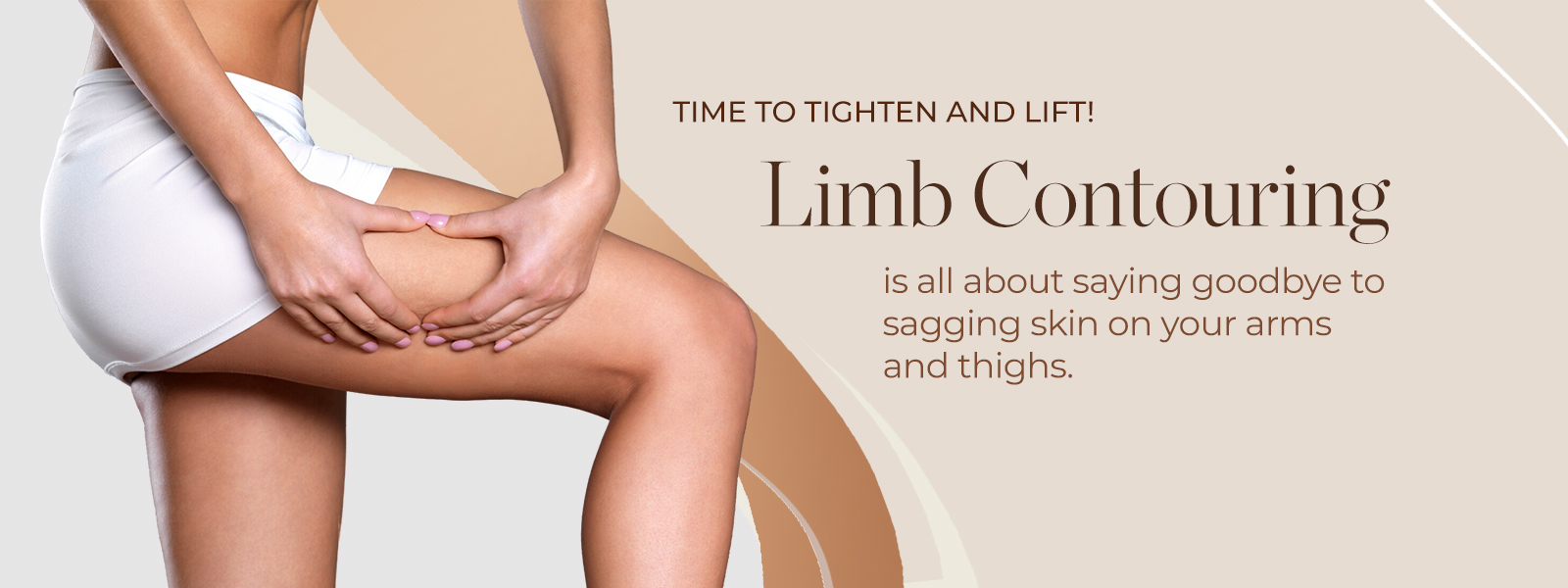
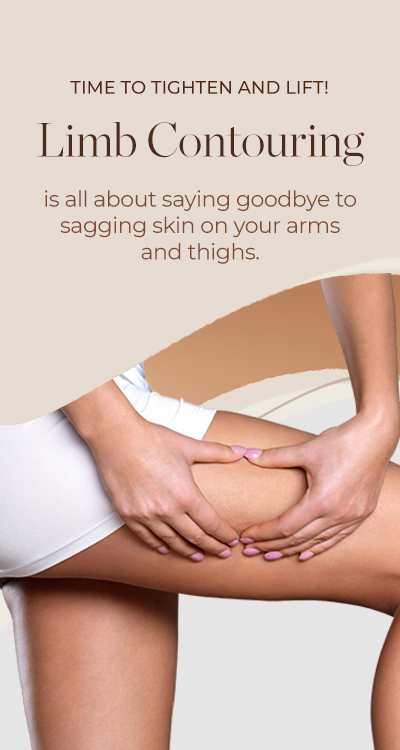
At A Glance
| End Result: | 3-6 months |
|---|---|
| Socially fit: | After 1-2 weeks |
| Fit for desk work: | Work: 1-2 weeks |
| Surgery: | General anaesthesia |
| Risk: | Low to moderate |
| Pain: | Low to moderated |
| Active exercise: | After 6 weeks |
| Inconveniences: | Initial swelling, bruising, and discomfort |
What is Limb Contouring?
Limb contouring refers to a range of cosmetic procedures aimed at improving the shape, tone, and proportion of the arms and legs. These procedures are typically sought after by individuals who are bothered by excess skin, fat, or laxity in the arms or legs, which may result from factors such as aging, significant weight loss, or genetics. Limb contouring surgery in Mumbai is increasingly popular among individuals looking to enhance their body shape with the help of experienced cosmetic surgeons and advanced medical facilities. Limb contouring procedures may include arm lift (brachioplasty), thigh lift, calf augmentation, and liposuction of the arms or legs. These surgeries are tailored to address specific areas of concern, such as sagging skin, excess fat deposits, or loose tissue, to create a more sculpted and toned appearance. Limb contouring procedures can have a significant impact on an individual’s body confidence and self-esteem by enhancing the appearance of the arms and legs and restoring a more youthful and proportionate limb contour.
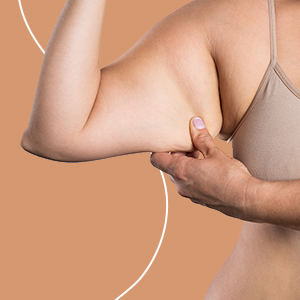
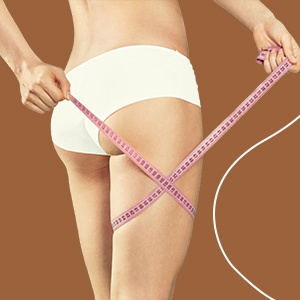
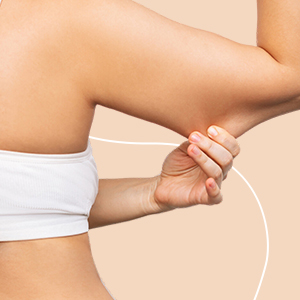
Why Limb Contouring?
Limb contouring is suitable for individuals who are bothered by the appearance of their arms or legs and wish to improve their overall body contour and proportions. Ideal candidates for limb contouring are typically in good overall health, have reached a stable weight, and have realistic expectations about the outcomes of the procedure. Individuals who have experienced significant weight loss, ageing-related changes, or genetic factors that have led to excess skin, fat, or laxity in the arms or legs may benefit from limb contouring procedures to achieve a more sculpted and toned limb contour.For those considering limb contouring surgery in Mumbai, the city offers access to skilled cosmetic surgeons and advanced techniques tailored to individual needs. Additionally, individuals who desire a more proportionate and balanced appearance of the arms and legs may consider limb contouring to enhance their overall body silhouette and boost self-confidence.
